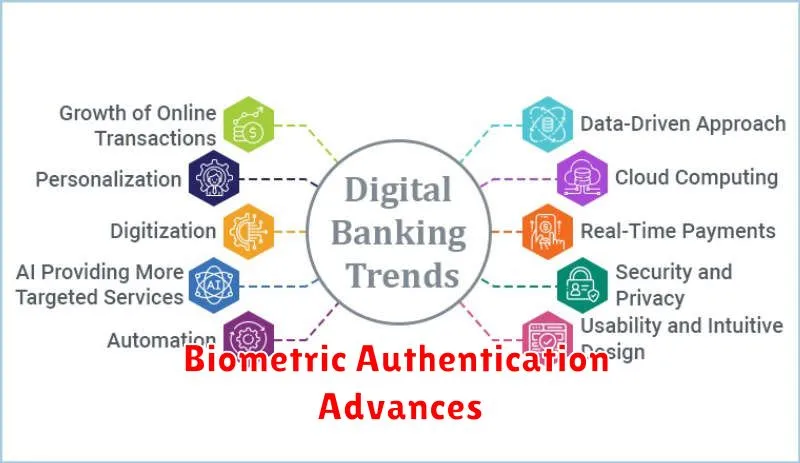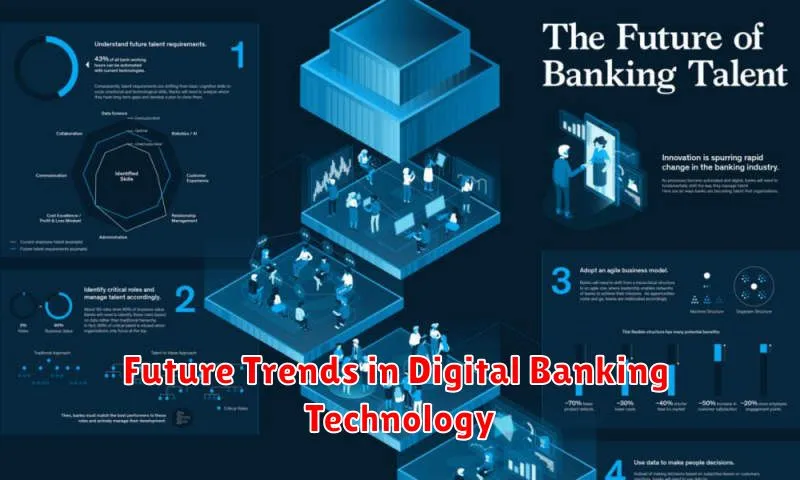The future of banking is undeniably digital. Digital banking technology is rapidly evolving, transforming how we interact with financial institutions and manage our finances. This article explores the key future trends shaping the landscape of digital banking, from the rise of artificial intelligence and blockchain to the increasing importance of personalization and cybersecurity. Understanding these emerging technologies is crucial for both financial institutions and consumers alike to stay ahead in the ever-changing world of finance.
From open banking and the metaverse to the continued growth of mobile banking and the increasing sophistication of fraud detection, the future of digital banking promises both exciting opportunities and significant challenges. This article will delve into the most impactful digital banking trends, analyzing their potential to revolutionize the financial industry and reshape the customer experience. Prepare to explore the future of finance and discover how these technological advancements will impact your financial life.
AI and Chatbot Integration

Artificial intelligence (AI) and chatbots are poised to revolutionize customer interaction in digital banking. AI-powered chatbots can offer 24/7 customer support, addressing frequently asked questions, resolving simple issues, and guiding users through basic transactions.
This integration allows human agents to focus on more complex requests, improving overall efficiency and reducing operational costs. Beyond customer service, AI can also personalize the banking experience by analyzing customer data to offer tailored financial advice and proactive support.
Fraud detection is another crucial area enhanced by AI. Sophisticated algorithms can analyze transactions in real-time to identify suspicious activities and prevent fraud, safeguarding both customer funds and the bank’s reputation.
Voice-Activated Banking
Voice-activated banking is rapidly emerging as a key trend in the future of digital finance. This technology allows customers to conduct banking transactions using voice commands through smart speakers, smartphones, and other voice-activated devices. Convenience is a primary driver of this trend, offering hands-free banking anytime, anywhere.
Security remains a critical aspect of voice banking. Financial institutions are implementing robust voice authentication and encryption protocols to mitigate risks associated with unauthorized access. Biometric voice prints and multi-factor authentication are commonly used to ensure user identity and protect sensitive financial data.
The potential applications of voice banking are vast. Customers can use voice commands to check account balances, transfer funds, pay bills, and even receive financial advice. The future likely holds even more sophisticated applications, such as personalized financial management and proactive fraud detection powered by voice interaction.
Predictive Analytics for Saving
Predictive analytics is poised to revolutionize how customers approach saving. By analyzing past spending habits, income patterns, and even external factors like market trends, banks can offer personalized saving recommendations.
These tools can predict potential shortfalls, suggest optimal saving amounts, and even automate transfers to help customers reach their financial goals. This proactive approach empowers customers to make informed decisions and build a more secure financial future.
For instance, if a customer consistently spends a certain amount on dining out each month, the system might suggest reducing that spending by a small percentage and automatically transferring the difference to a savings account. Over time, these small adjustments can accumulate significant savings.
Biometric Authentication Advances

Biometric authentication is rapidly becoming a cornerstone of modern security, especially within the digital banking sector. Enhanced security and improved user experience are the primary drivers of this adoption.
Traditional methods, such as passwords and PINs, are increasingly vulnerable to breaches. Biometrics offers a more robust solution by leveraging unique individual characteristics. These characteristics include fingerprints, facial recognition, voice patterns, and even behavioral biometrics like typing rhythm.
Recent advances have focused on improving the accuracy and speed of these systems. For example, advancements in facial recognition algorithms now account for variations in lighting and facial expressions, leading to more reliable authentication. Similarly, improvements in fingerprint scanning technology allow for faster and more convenient authentication, even with slightly imperfect scans.
Furthermore, the integration of biometrics with multi-factor authentication is adding another layer of security. Combining something you are (biometric) with something you have (like a mobile device) provides a significantly more secure authentication process.
Blockchain in Digital Banking
Blockchain technology holds significant potential to revolutionize various aspects of digital banking. Its core strengths lie in its ability to provide enhanced security, transparency, and efficiency.
One key application is in streamlining cross-border payments. Traditional methods often involve multiple intermediaries, leading to delays and higher costs. Blockchain can facilitate faster and cheaper international transactions by eliminating these intermediaries and automating the process.
Improved fraud detection is another benefit. The immutable nature of blockchain records makes it extremely difficult to alter or tamper with transaction data, reducing the risk of fraudulent activities. This enhanced security can lead to greater trust and confidence in digital banking systems.
Know Your Customer (KYC) and Anti-Money Laundering (AML) compliance can also be improved through blockchain. By creating a secure and shared ledger of customer identities and transactions, banks can streamline the KYC/AML process and reduce compliance costs.
Hyper-Personalization
Hyper-personalization represents a significant advancement in personalized banking. It moves beyond simply addressing customers by name and offering generic product recommendations. Instead, hyper-personalization leverages real-time data and advanced analytics, including AI and machine learning, to understand individual customer behaviors, preferences, and financial goals with remarkable granularity.
This deep understanding allows banks to offer highly tailored products and services, financial advice, and even customized user interfaces. For example, a bank might analyze a customer’s spending habits and offer personalized budgeting tools or suggest specific investment opportunities aligned with their risk tolerance and financial objectives.
The benefits of hyper-personalization extend to both the customer and the bank. Customers experience enhanced engagement and satisfaction due to more relevant and timely interactions. Banks, in turn, benefit from increased customer loyalty, higher conversion rates, and improved operational efficiency.

